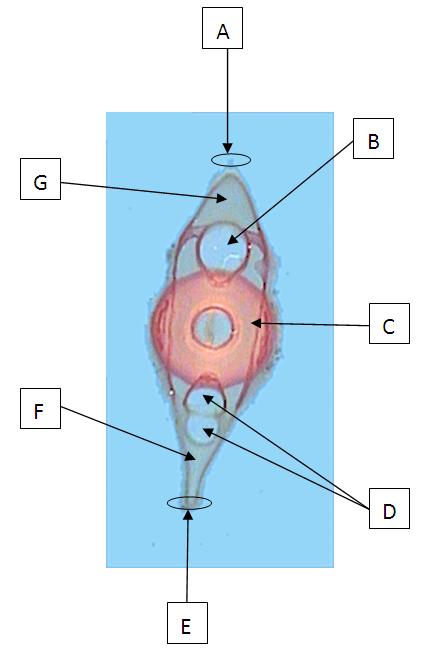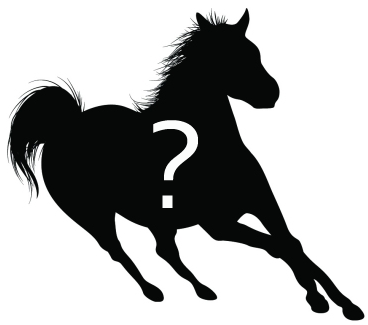Axial Skeleton Assessment

Quiz designed to test your knowledge of the axial skeleton in fish, amphibians, birds, and mammals. The quiz will consist of multiple choice, true and false, fill in the blank, and short essay.
- 1.
What type of vertebrae is found in the figure?
- A.
Trunk
- B.
Cervical
- C.
Thoracic
- D.
Caudal
Correct Answer
D. Caudal -
- 2.
What structure is arrow A pointing towards?
Correct Answer
neural spine - 3.
Name structure B.
Correct Answer
spinal cord
vertebral canal - 4.
Name structure C.
Correct Answer
centrum - 5.
In what class does the first cervical vertebrae appear?
Correct Answer
labyrinthodonts - 6.
___________ is the shape of the centrum found in chondrichthyes?
Correct Answer
amphicoelous
biconcave - 7.
What is the name for the abdominal ribs in crocodilians?
- A.
Gastrocnemius
- B.
Gastralia
- C.
Floating ribs
- D.
Lumbar vertebrae
Correct Answer
B. Gastralia -
- 8.
What cells form vertebrae during embryonic development?
- A.
Dermatome
- B.
Scleroblasts
- C.
Myotome
- D.
Sclerotome
Correct Answer
D. Sclerotome -
- 9.
Name strucure D.
Correct Answer
hemal canal - 10.
Arrow E points toward what structure?
Correct Answer
hemal spine - 11.
What is the shape of the centrum found in turtles and birds?
- A.
Heterocoelous
- B.
Procoelous
- C.
Acoelous
- D.
Amphicoelous
Correct Answer
A. Heterocoelous -
- 12.
Class Aves contains a __________, the fusion of posterior thoracic, lumbar, sacral, and occasionally, caudal vertebrae which carries the weight of the hind end of the animal.
Correct Answer
synsacrum - 13.
What is the function of zygapophyses in vertebrae?
- 14.
Name structure F.
Correct Answer
hemal arch - 15.
Identify structure G.
Correct Answer
neural arch - 16.
Name structure A.
Correct Answer
neural spine - 17.
Identify part B.
Correct Answer
centrum - 18.
_______________ centra are concave anteriorly and convex posteriorly which permits extensive motion in most directions without stretching the nerve cord.
- A.
Acoelous
- B.
Opisthocoelous
- C.
Heterocoelous
- D.
Procoelous
Correct Answer
D. Procoelous -
- 19.
Name structure A.
Correct Answer
neural arch - 20.
What is structure B?
- A.
Neural spine
- B.
Ribs
- C.
Hemal arch
- D.
Hemal spine
Correct Answer
B. Ribs -
- 21.
Identify structure C.
Correct Answer
postzygapophysis
postzygapophyses - 22.
How many cervical vertebrae are found in a Necturus?
- A.
0
- B.
1
- C.
2
- D.
3
Correct Answer
B. 1 -
- 23.
How many trunk vertebrae are found in a Necturus?
- A.
12
- B.
15
- C.
17
- D.
18
Correct Answer
C. 17 -
- 24.
In flying birds, the massive flight muscles arise from a large sternum that bears a ventral _________.
Correct Answer
keel
carina - 25.
Identify part A.
Correct Answer
spinous process - 26.
Name structure B.
Correct Answer
mammillary process - 27.
Name structure C.
Correct Answer
pleurapophysis - 28.
How many lumbar vertebrae are found in Felis?
- A.
4
- B.
5
- C.
6
- D.
7
Correct Answer
D. 7 -
- 29.
Identify structure A in the Felis specimen.
Correct Answer
vertebral canal - 30.
If a vertebrate does not contain a centra, what is this called?
- A.
Diplospondyly
- B.
Aspondyly
- C.
Monospondyly
- D.
Polyspondyly
Correct Answer
B. Aspondyly -
- 31.
All tetrapod vertebrae derive from ______________ vertebrae.
Correct Answer
rhachitomous - 32.
Identify structure B.
Correct Answer
prezygapophysis
prezygapophyses
cranial zygapophysis - 33.
Identify structure C in the cervical vertebrae.
Correct Answer
transverse process - 34.
What is structure D?
Correct Answer
centrum
body - 35.
Ribs that articulate with each other but not with the sternum are classified as ______________.
- A.
True ribs
- B.
Floating ribs
- C.
False ribs
- D.
Sternal ribs
Correct Answer
C. False ribs -
- 36.
Identify structure E.
Correct Answer
transverse foramen - 37.
Identify structure A.
Correct Answer
articular facet - 38.
What is arrow B pointing towards?
Correct Answer
demifacet - 39.
In tetrapods, the ventral rib head, capitulum, articulates with the ______________.
- A.
Parapophysis
- B.
Diapophysis
- C.
Tuberculum
- D.
Body
Correct Answer
A. Parapophysis -
- 40.
Vertical and horizontal movements of the head are limited to the ________.
- A.
Axis
- B.
Atlas
- C.
Centrum
- D.
Zygapophyses
Correct Answer
B. Atlas -
Quiz Review Timeline +
Our quizzes are rigorously reviewed, monitored and continuously updated by our expert board to maintain accuracy, relevance, and timeliness.
-
Current Version
-
Dec 31, 2012Quiz Edited by
ProProfs Editorial Team -
Apr 19, 2009Quiz Created by
Landonbrewer
 Back to top
Back to top























